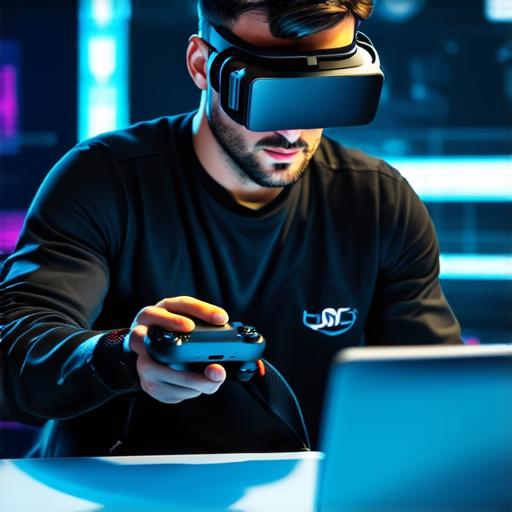
How does virtual reality provide assistance?

Virtual reality (VR) is a rapidly growing technology that has the potential to revolutionize various industries. It involves creating a computer-generated simulated environment that users can interact with using specialized headsets or other devices. VR provides assistance in several ways, including training, education, entertainment, and therapy. In this article, we will explore some of these applications and benefits of virtual reality.
Training and Education:
Virtual Reality provides an immersive learning experience that allows users to practice skills in a safe environment. This technology can be used for various types of training, including medical, military, and workplace training. By simulating real-life situations, VR enables learners to develop their skills without the risk of harm or injury. For example, medical students can perform surgeries on virtual patients, while pilots can practice flying in a virtual cockpit. This type of training is not only more effective but also more cost-effective than traditional methods.
Entertainment:
Virtual reality provides an immersive entertainment experience that allows users to explore new worlds and interact with characters in ways that were previously impossible. VR gaming has become increasingly popular, with many games offering a fully immersive experience that transports players into virtual environments. This technology can also be used for non-gaming applications such as immersive movies and interactive art installations.
Therapy:
Virtual reality has been used as a tool for therapy in various fields, including mental health and physical rehabilitation. In mental health therapy, VR is used to treat anxiety disorders, post-traumatic stress disorder (PTSD), and phobias. By simulating triggering situations, VR allows patients to confront their fears in a controlled environment. This therapy has been shown to be as effective as traditional cognitive-behavioral therapy. In physical rehabilitation, VR can be used to help patients recover from injuries by providing a safe environment for them to practice movements and exercises.
Enhanced Customer Experience:
Virtual reality provides businesses with the ability to create immersive experiences for their customers. This technology can be used in various industries such as real estate, retail, and hospitality. For example, real estate agents can use VR to give potential buyers a virtual tour of properties they are interested in. Retailers can use VR to allow customers to try on clothes virtually or explore products in 3D. This technology provides businesses with a competitive advantage by offering a unique and memorable experience for their customers.
Benefits of Virtual Reality:
Immersive Experience: VR provides a fully immersive experience that allows users to feel as if they are in a real environment. This technology can be used to create realistic simulations of various environments, such as training scenarios or entertainment experiences.
Safe Environment: VR enables learners and patients to practice skills in a safe environment without the risk of harm or injury. This technology provides a controlled environment that allows users to explore new ideas and concepts without any real-world consequences.
Cost-Effective: Virtual reality is often more cost-effective than traditional methods for training, education, and entertainment. This technology eliminates the need for physical materials and equipment, which reduces costs and makes it accessible to a wider range of people.
Case Study:
One example of how virtual reality provides assistance is in the field of medical training. The University of California, San Francisco (UCSF) used VR to train surgical residents in a simulation of a complex surgery. The simulation provided a realistic environment that allowed residents to practice the surgery without the risk of harming real patients. This technology improved the residents’ skills and confidence, which led to better patient outcomes.
In conclusion, virtual reality provides assistance in several ways, including training, education, entertainment, therapy, and enhanced customer experience. The benefits of this technology make it an attractive option for various applications, and its immersive experience sets it apart from other forms of media. As virtual reality continues to evolve, we can expect to see even more creative uses for this technology in the future.


